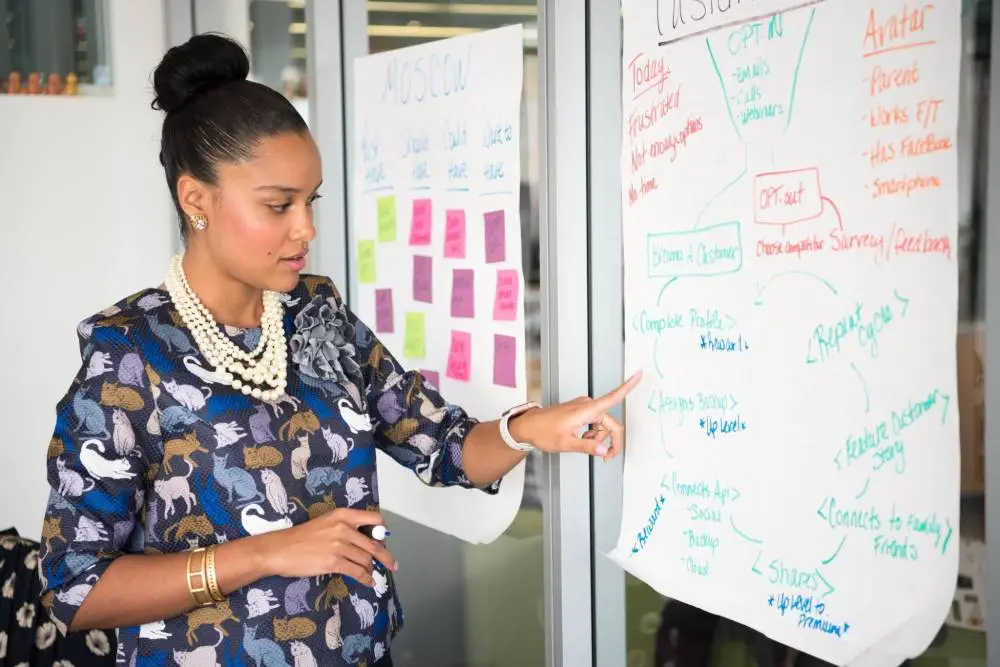Giving a presentation in front of a class might be intimidating, but it doesn’t have to be. Anyone, with the proper preparation and mindset, can deliver an excellent demonstration that leaves an impression. This post will go through 9 steps for giving an excellent class presentation.
A presentation’s goal is to share knowledge with an audience. The purpose of any presentation, be it a project, report, or speech, is to convey information clearly and make an impression.
To accomplish this, you must carefully plan and deliver your presentation. Here are nine guidelines to follow so that your presentation in class is a success.
1. Understand your topic
Like writing an essay, making a presentation calls for thorough research on your part. Just like with a research paper, the more time and effort you put into learning about and researching your topic, the better your presentation will be received.
First, you should do extensive research, making careful notes and structuring your results so that you have a complete picture of your issue. You’ll be able to zero down on the essential ideas and arguments, as well as get a more sophisticated understanding of the subject.
When it comes to writing an essay, sometimes it can be difficult to fully understand a topic, especially if it’s new or complex. This is where pay for essay professionals can be a valuable investment. By working with experienced writers and researchers, you can gain a deeper understanding of your topic and get the guidance and support you need to create a successful essay.
The same principle applies to creating a presentation – if you’re struggling to fully grasp your topic, consider reaching out to experts in your field or working with a presentation coach to help you develop a more comprehensive understanding. By investing in your knowledge and expertise, you’ll be able to create a more compelling and engaging presentation that resonates with your audience.
2. Know your audience
When giving a presentation, knowing your audience is crucial. It enables you to customize your demonstration to fit their requirements and interests, making it more interesting and pertinent. When planning your presentation, keep things like audience age, background, and level of understanding in mind.
3. Plan your presentation
For a presentation to be successful, it must be well-planned. Make an introduction, a list of your important points, and a conclusion using your outline to frame your presentation clearly. Do not overly rely on your visual aids; use them to support your claims only. To make sure you stay on schedule and cover all the essential aspects of your presentation, practice it beforehand.
4. Use visual aids
Visual aids are a great approach to enriching and engaging your audience throughout your presentation. To keep your audience interested, use graphics, photographs, and videos to demonstrate your arguments. Use relevant pictures that are easy to understand and reinforce your message.
5. Practice your delivery
Practice makes perfect, so rehearse your presentation several times before delivering it in class. Practice your delivery, timing, and body language to ensure you come across as confident and engaging. Use a mirror or record yourself to evaluate your performance and make improvements where necessary.
6. Manage nerves and body language
Nerves are normal, but they can be distracting when demonstrated in front of a class. To manage your nerves, take deep breaths, and try to relax. Use positive body language to convey confidence and enthusiasm. Maintain eye contact with your audience and use gestures to emphasize your points.
7. Engage your audience
The ability to engage your audience is critical to the success of any demonstration. Use rhetorical questions, tales, or interactive components to catch and hold their attention. Make your presentation more personal and relevant by using a conversational tone.
8. Handle questions and feedback
Handling questions and feedback is an essential part of any presentation. Be prepared to answer questions and provide additional information when necessary. If you don’t know the answer to a question, be honest and offer to follow up later. Use feedback to improve your demonstration for future opportunities.
9. End with a strong conclusion
A strong conclusion is essential to leave a lasting impression on your audience. Summarize your main points and restate your key message. End with a call to action or a thought-provoking question that leaves your audience thinking about your presentation long after it’s over. Thank your audience for their attention and provide any additional resources or information they may need.
Conclusion
Delivering an effective presentation in class requires preparation, practice, and confidence. Use these nine steps to plan, create, and deliver a demonstration that engages your audience and leaves a lasting impression. With time and practice, you can become a confident and skilled presenter.





